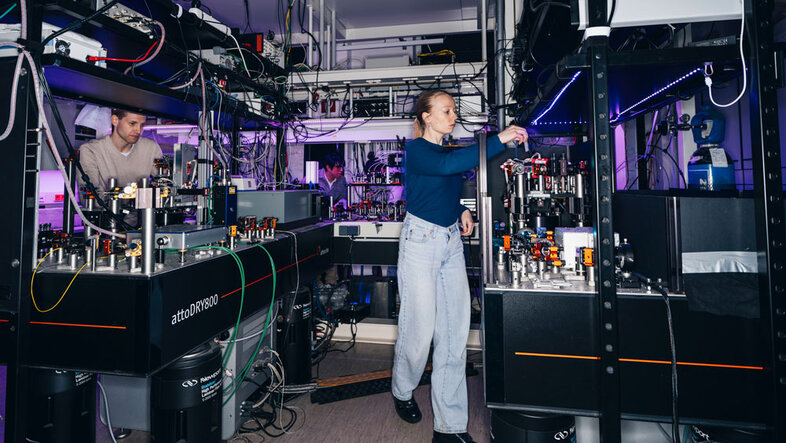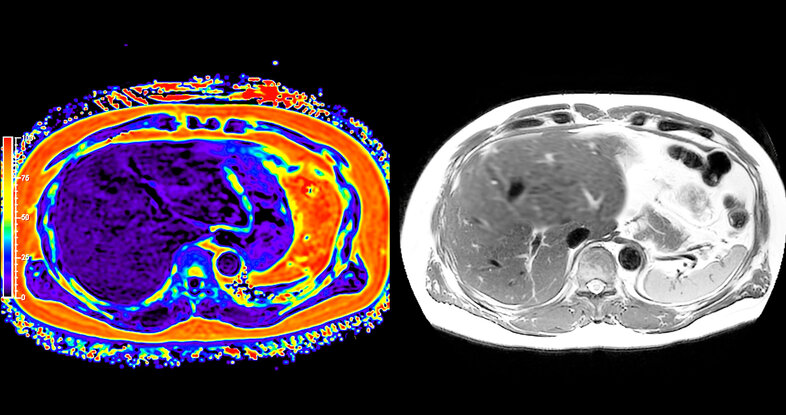New game, new rules: How does quantum research change our reality?
We use quantum physics every day, without quite understanding it. It is part of semiconductors and computer chips, barcode scanners and laser printers, smartphone displays and atomic clocks. If you have ever undergone an MRI scan, you should know that this technology is possible only thanks to quantum mechanics.
Scientists such as Max Planck, Albert Einstein, Erwin Schrödinger, Werner Heisenberg and Wolfgang Pauli built the foundations of these ground-breaking first-generation technologies at the beginning of the 20th century, with significant contributions coming from Austria and from the University of Vienna.
In the midst of the second quantum revolution
This year marks the centenary of the establishment of quantum mechanics (Werner Heisenberg was the first to describe it in mathematical terms in 1925). UNESCO has thus decided to celebrate the International Year of Quantum Science and Technology in 2025 (activities of the University of Vienna in the World Quantum Year). And as if on cue, not a day has passed since the beginning of the year without media reports on significant steps towards quantum computers and new technologies. We are in the midst of what is being referred to as the second quantum revolution, and the global race is on for the next generation of quantum technologies.
Race for the first universal quantum computer
In the race to develop the first quantum computer, various research groups around the world are placing their bets on different technologies: Google and IBM favour superconductive qubits, while others work with ion traps or quantum dots. Philip Walther and his team at the University of Vienna are focusing on photons that store and process quantum information in light. “Since photons literally move at the speed of light, they can be used not only for data processing but also for communication with the computer. This is an interesting advantage over other architectures,” explains Walther.
Read more about the team's work on photonic quantum computing. Their most recent work appeared on the cover of Nature Photonics.
The University of Vienna is at the forefront. Researchers of the University conduct basic research on fundamental quantum phenomena in more than 18 high-tech laboratories and develop innovative technologies which are relevant, for example, for secure online payments or machine learning. These efforts have already led to the formation of several start-up businesses. In 2022, Anton Zeilinger, together with Alain Aspect and John F. Clauser, received the Nobel Prize in Physics for his pioneering research in the field of quantum information and his experiments with entangled photons, which “bridged the gap between fundamental questions about nature and concrete applications” as the Nobel Prize committee declared.
This close connection between theory and experiment is a characteristic feature of quantum research at the University of Vienna and has been generating new findings again and again. At the cutting edge of theoretical development, the University’s physicists are tackling the greatest enigma in physics – the question of how to combine quantum physics and the theory of relativity.
Medicine: Quantum technology enabling more accurate diagnoses
One of the achievements of the second quantum revolution is the PET scan (positron emission tomography), a procedure used to measure metabolic processes and other physiological processes within the body, e.g. to diagnose cancer or Alzheimer’s disease. It is based on the principles of particle interaction, which can be explained by quantum phenomena. Beatrix Hiesmayr and her research team at the University of Vienna strive to further develop this technology by gathering information from metabolic processes to identify new biomarkers for medical imaging.
Read more about the study, published with Pawel Moskal, the father of the J-PET, in Scientific Reports.
A semester dedicated to the quantum world
As part of the semester question 2025, you have the opportunity to engage with University of Vienna’s experts in in quantum research. Discover first-hand how their theoretical findings shake the foundations of physics and explore the potential they hold for future technologies. Which doors will open once we have a full understanding of quantum physics? Are we still at the very beginning or just one major breakthrough away?
Once we have fully understood quantum physics, this will be an even greater revolution than the achievements of Copernicus and Columbus – for everyone, not only for us physicists.Anton Zeilinger (2005)
Together with quantum physicist Beatrix Hiesmayr, Head of the Quantum Particle Workgroup, we explain the most important basic concepts of quantum physics below to make sure that you are well-prepared for this adventure – using the example of a ‘magic quantum cube’:
The quantum Rubik’s Cube – a thought experiment
Imagine a special Rubik’s Cube whose behaviour follows the rules of quantum physics:
Superposition
Without looking at it first, you place the Rubik’s Cube in a non-transparent box. In the quantum world, the Rubik’s Cube would now be both solved and unsolved at the same time. Only once you open the box does the Cube decide to take a certain state – just like a quantum object that only takes on a certain state/characteristic once you measure it. The crucial difference between a classic Rubik’s Cube and a quantum mechanics cube is that the quantum cube in the box ‘behaves’ as if both states were possible ‘at the same time’. A quantum computer makes use of this feature. It does not use either zero or one for calculations, like a common computer, but rather uses both options ‘at the same time’.
Quantum entanglement
Let’s say that two edge pieces of the Rubik’s Cube are magically connected – Einstein would say by some “spooky action”. No matter how you scramble the Cube, as soon as you take a measurement of one of the two pieces (e.g. to investigate a specific colour), the measurement automatically determines the colour of the magically connected piece. And it gets even more bizarre – this applies to all characteristics of the piece and cannot be explained by assuming that they agreed on it before. Therefore, we cannot define objects as the sum of their individual parts. Quantum cryptography makes use of this principle to create secure keys by means of entangled systems. Any interception attempts would be detected immediately.
Quantum jump
You now twist one face of the Cube and instead of changing gradually, the Cube suddenly transitions into an entirely different configuration. In quantum physics, electrons in an atom can jump from one energy level to another without taking any steps in between. This principle makes laser technology possible. Electrons in an atom jump from a lower to a higher energy level and emit light when they fall back to the lower level. This type of quantum jumps provides the foundation for a wide range of modern technologies, ranging from satellite navigation to lasers and smartphones.
Uncertainty principle
We now want to measure the position and speed of our Rubik’s Cube while it is turning. However, the quantum world is subject to a fundamental restriction. The more precisely we determine the speed of the Cube, the less precisely can we determine its position – and vice versa. In case of a common Rubik’s Cube, we could measure both very accurately at the same time, but this is not possible in the quantum world. This also produces far-reaching philosophical insights; for quantum technologies, it highlights the limitations of the information gained from measurements that can be used, for example, to prevent the unauthorised interception of communications.
What everybody should know about quantum physics
The principles that we playfully illustrated with our made-up quantum Rubik’s Cube have led to the development of real technologies. Even though even quantum physicists have yet to fully understand quantum phenomena, we can still accurately calculate and predict them. Furthermore, we are becoming ever better at controlling them.
According to Beatrix Hiesmayr, this is what you should know about quantum physics. Quantum mechanics may be the craziest theory we have, but it is also the most accurate one. “You can imagine this like baking a cake. If you follow the recipe closely, you will get a delicious cake, even if you do not know why you have to separate the egg yolk from the egg white. Analogous to this, we are able to make precise predictions in the quantum world without fully understanding the underlying processes. The better we understand the puzzling and fascinating quanta and the better we get at controlling them, the more new and – from today’s perspective – unimaginable opportunities will open up.”
- Stay tuned and learn more about the findings and everyday work of quantum researchers as well as the exciting history of quantum physics at the University of Vienna in our articles, podcasts and videos on the Rudolphina research magazine.
- Discover the range of activities at the University of Vienna in the World Quantum Year 2025
- Research group Quantum Optics, Quantum Nanophysics and Quantum Information (QQQ) at the University of Vienna
- Quantum Science Austria (quantA)
- UNESCO International Year of Quantum Science and Technology (IYQ)
- Events at the University of Vienna during World Quantum Year
- Austrian activities during World Quantum Year



